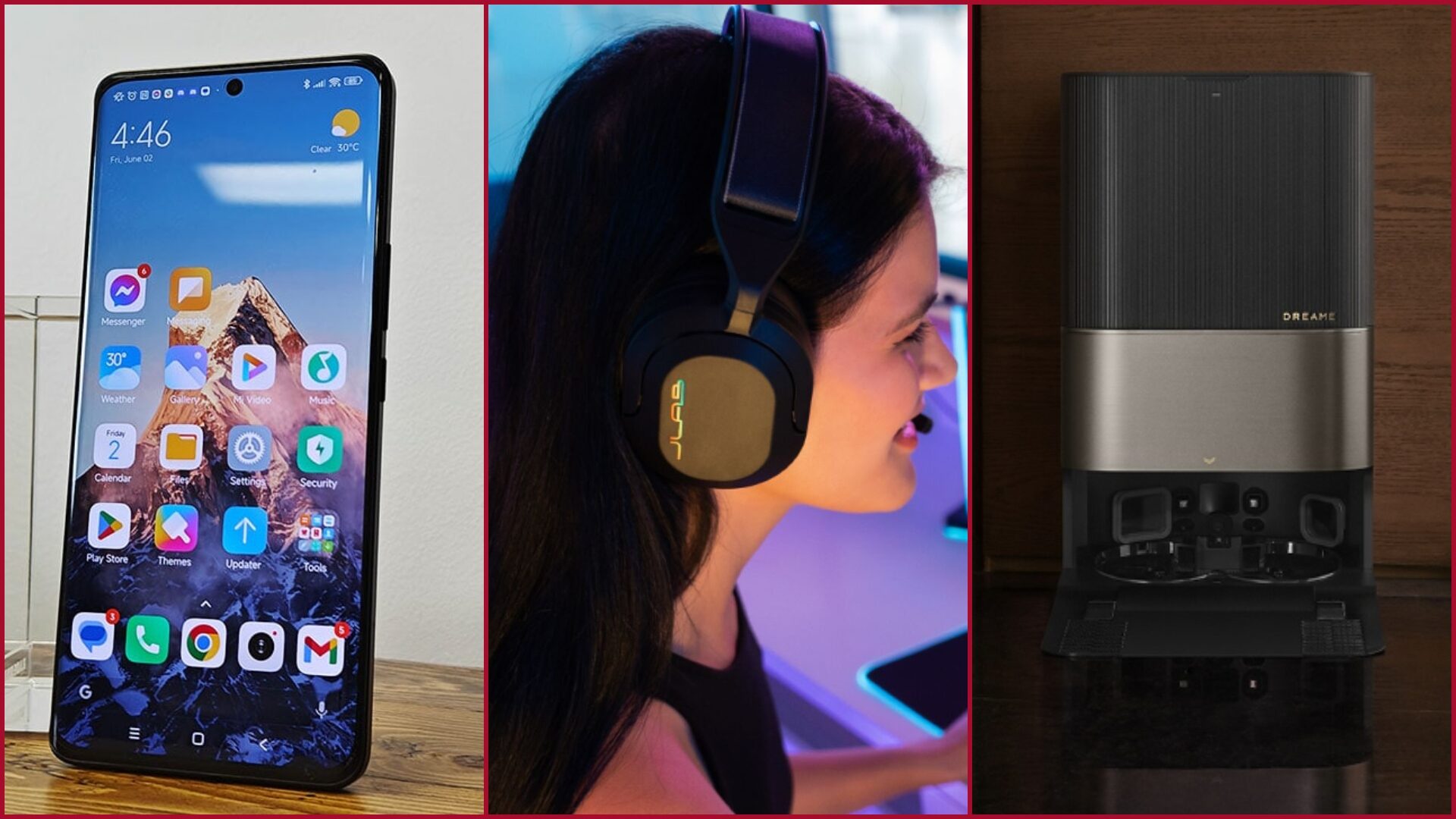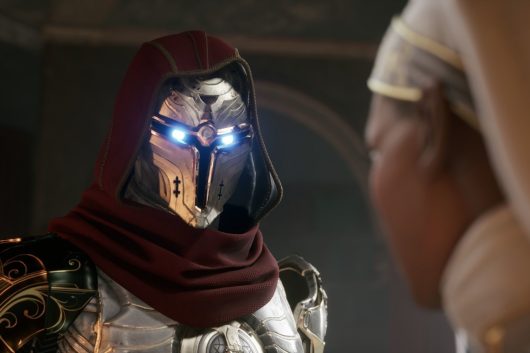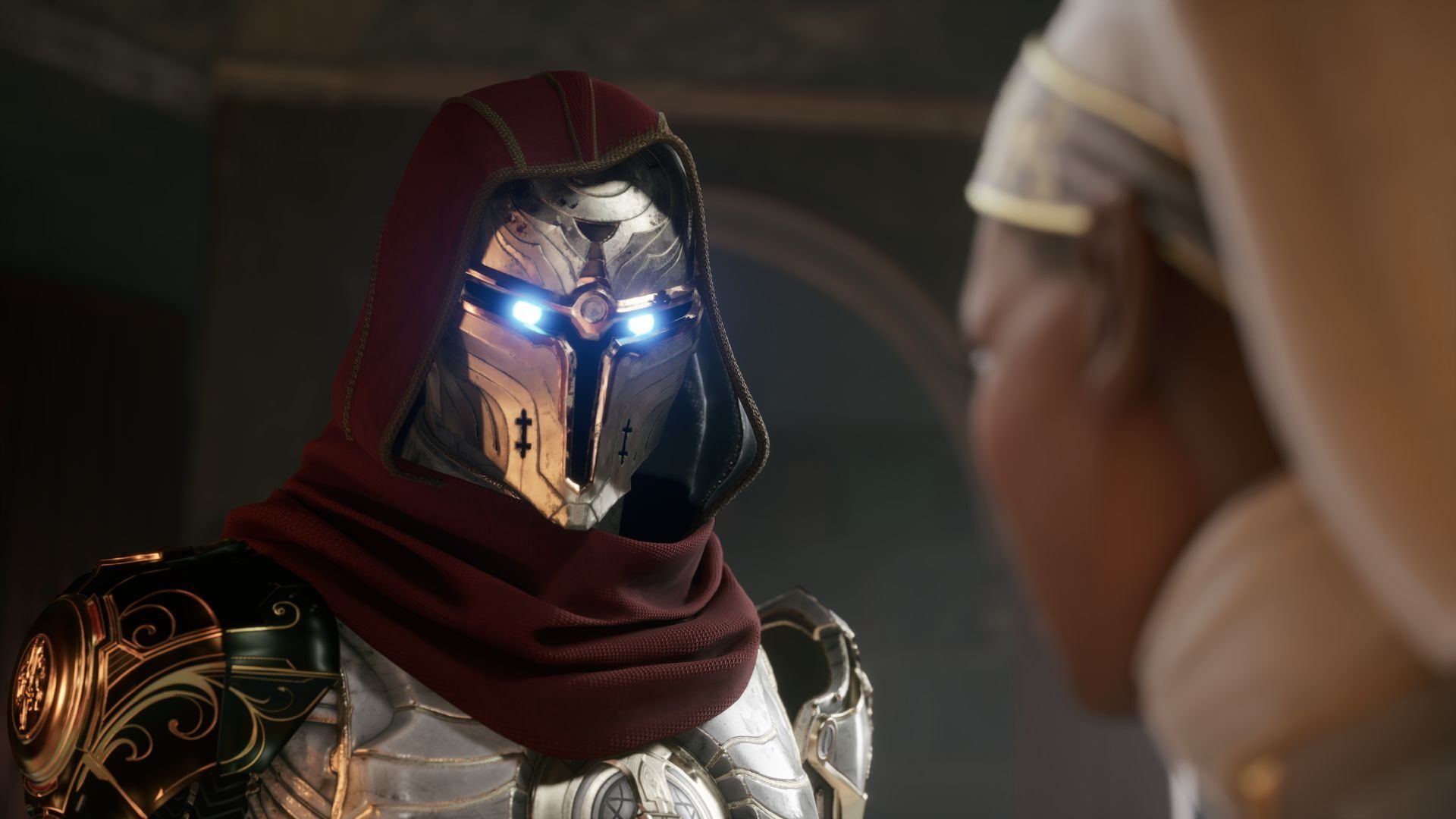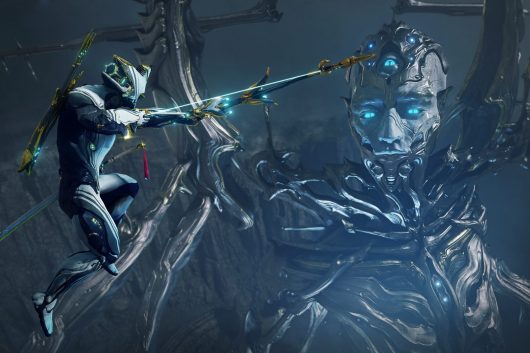
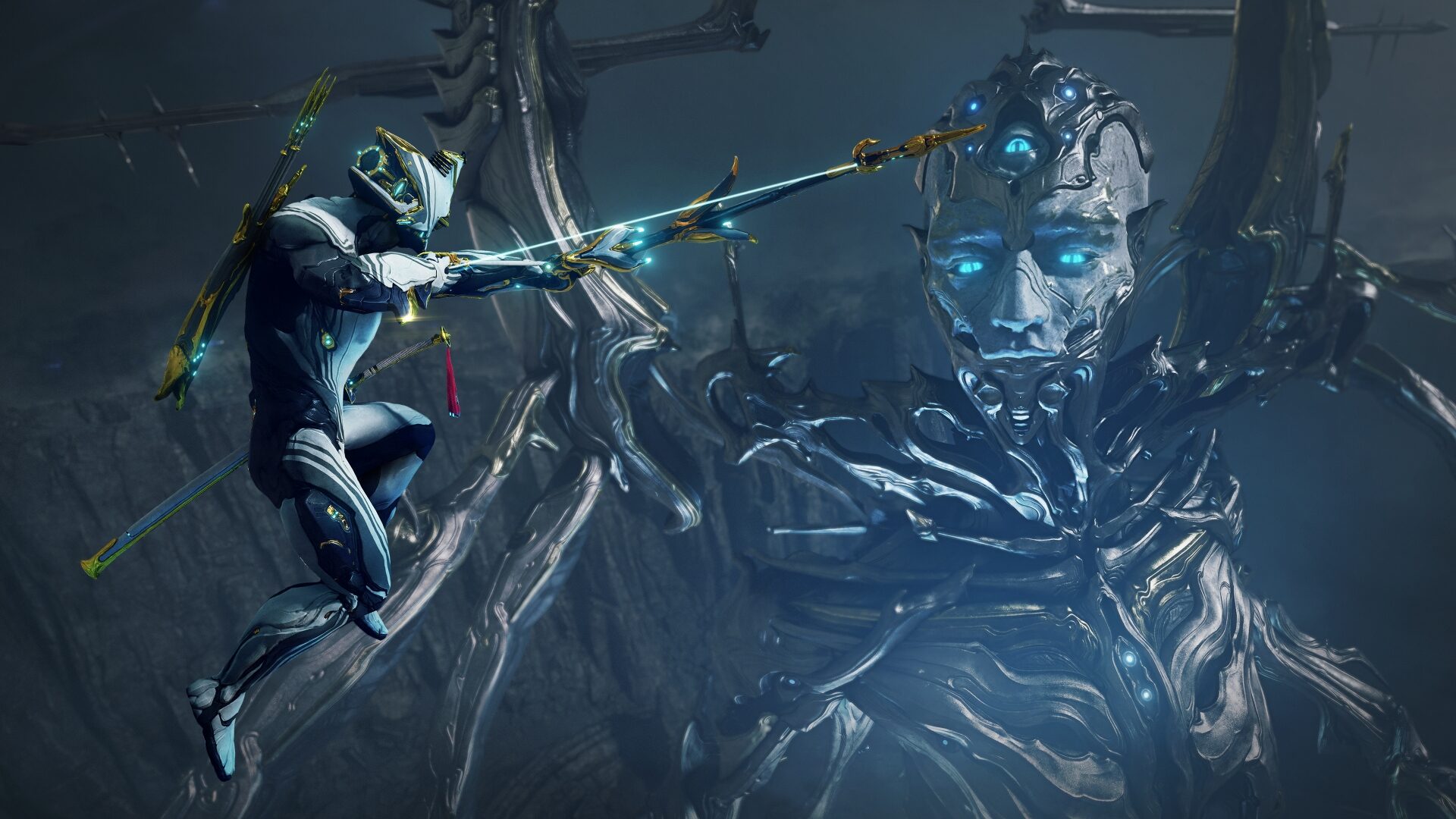
A previously overlooked segment of Warframe’s narrative will be unveiled on December 10, coinciding with the arrival of the next monumental cinematic update, The Old Peace.
Originally revealed at this year’s TennoCon, Warframe: The Old Peace introduces a fresh quest that delves into an aspect of the Operator’s history that had remained shrouded in obscurity. Players will make their inaugural journey to the Tau System—navigating the Excalibur Prime Warframe for quest challenges, engaging in battles within trenches and against colossal titans, and reuniting with a long-lost ally, a Sentient named Adis. Throughout this adventure, players will also uncover the details of the titular peace agreement between the Orokin and the Sentients… and likely, how it ultimately disintegrated.
The update will also feature an enhancement of the game’s Focus system, introducing significant finishing maneuvers like the Final Fantasy-inspired “limit break” technique showcased in the TennoCon demonstration. Each of the five Focus schools will receive one of these engaging abilities, which can be unlocked upon completing the new questline through new Tektoylst Artifacts, weaponry obtainable for the Operator or Drifter. Additionally, the Operator will undergo their first graphical revamp, elevating character models to contemporary standards.
The Old Peace update will also introduce a secondary narrative titled “The Devil’s Triad,” which includes the emergence of Uriel, the 63rd Warframe; its Protoframe, Roathe; along with Protoframes for Harrow (Father Lyon Allard) and Wisp (Marie Leroux). These Protoframes will feature their own unique relationship dynamics accessible through the KIM system established in Warframe 1999.
Uriel’s powers are centered around demonic construct minions that carry out his commands. His signature weapon represents a new category for the game, aligning with the World War I motifs of the overall update by introducing a bayonet—taking up both primary and melee slots in players’ loadouts, complete with their specific mods.
However, the core of players’ experiences in The Old Peace will revolve around the “Dark Refractium,” encompassing two vast new modes. “Descendia” is a 21-stage gauntlet associated with the Devil’s Triad, where Tenno descend through an Orokin tower by fulfilling various tasks, such as gathering resources, exterminating foes, or even engaging with Necramechs in battle.
Conversely, “Perita Rebellion” is a “12-Minute War” mode inspired by Tau and the main narrative of The Old Peace. The Lotus transports the Operator into their memories of Tau for a brief spell; the objective is to accomplish multiple tasks within the 12-minute timeframe to gain power-ups, which will carry over into a dynamic boss encounter against one of three distinct bosses. Hunhullis from the TennoCon trailer is among these challengers, and facing him culminates in a thrilling Archwing confrontation.
This time, Digital Extremes is establishing a method for newcomers to team up with their more seasoned companions or experience The Old Peace’s duo of game modes. A prompt will enable players who haven’t yet completed the prerequisite quest, Lotus Eaters, to temporarily bypass the storyline and participate in Descendia and Perita Rebellion. After twelve years, Warframe boasts an incredible volume of content catering to both newcomers and fresh releases, and this adaptation will intrigue newcomers with a glimpse of what lies ahead.
The Old Peace will launch on December 10 as a complimentary update. Warframe is currently available as a free-to-play title on all major platforms, with a native Nintendo Switch 2 version under development for a 2026 release, along with an Android beta commencing today as well.
READ ARTICLE


